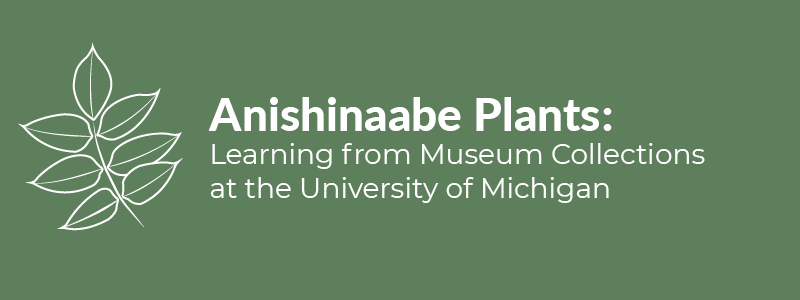Black Ash Baskets
In 1933, Volney Jones collected examples of different types of black ash baskets made by families on Walpole Island and Garden River. On Walpole Island, Levi and Winnie Sturgeon spent several days showing Jones how they made black ash baskets. Jones observed them making a small corn basket and a melon basket. Here is a detailed illustration of the handle Winnie Sturgeon created on another basket. He also observed Elizabeth Collwell, George and Sarah Shogonosh's daughter, making a market basket.
The Sturgeons showed Jones all aspects of basket production from start to finish. Levi gathered or bought the logs, and he and Winnie then processed the wood into splints before dying and weaving them into baskets. To create splints, Levi began by pounding a carefully selected black ash log with the butt of a hammer to loosen its rings. He then peeled the strips, approximately nine rings thick, from the log. He further separated the strips into thin splints by peeling apart the rings. He then used his knife to smooth, thin, and cut the strips as needed.
Levi Sturgeon also prepared splints using a "stripper," a small block of wood with metal teeth at different intervals, and a shaving horse, both of which he built specifically for basket making. To add color to their baskets, the Sturgeons dyed splints with commercial dyes.
While black ash was the preferred wood for many baskets, the Sturgeons told Jones that they occasionally made baskets out of white ash and also used hickory. By 1933, black ash trees were scarce on Walpole Island, and logs were often purchased from farmers on the mainland. The process of making baskets was enmeshed in an extensive social and economic network.
Minidewak -- "They give from the Heart"
“Gifts from the earth or from each other establish a particular relationship, an obligation of sorts to give, to receive, and to reciprocate.”
Robin Kimmerer, Braiding Sweetgrass
Wasson (Renée) Dillard, Anishinaabe (Odawa) natural fiber artists and teacher, emphasizes the importance of reciprocity and gifts in the practice of basket weaving. This process begins when the weaver harvests materials from the environment, creating a contract with the tree in which the weaver promises that its sacrifice will be valued and nothing will be wasted. Wasson makes good on this promise by ensuring that all of her scraps of materials are saved either for future projects or used for fires. Robin Wall Kimmerer describes this practice as Honorable Harvest— “to take only what is given, to use it well, to be grateful for the gift, and to reciprocate the gift.”
This care and reciprocity for the environment is especially important in the face of unsustainable land-management practices, changing ecosystems, and invasive species such as Emerald Ash Borer (EAB). The arrival of the EAB in southeast Michigan in 2002 has had a devastating impact on the groves of black ash in throughout the northeastern US. Despite this devastation, Wasson believes that this bug “is still one of the earth’s creatures” and that it has some purpose and came to the Great Lakes region to teach us something.
In the video below, you can learn more about Anishinaabek relationships with all of Mother Earth's creations, including EAB, and the importance of black ash weaving for passing on these teachings.
Black Ash Basketry: A Story of Cultural Resilience, a 2010 collaborative project of the Great Lakes Lifeways Institute, Grand Rapids Community College, and the Goodwillie Environmental School.


